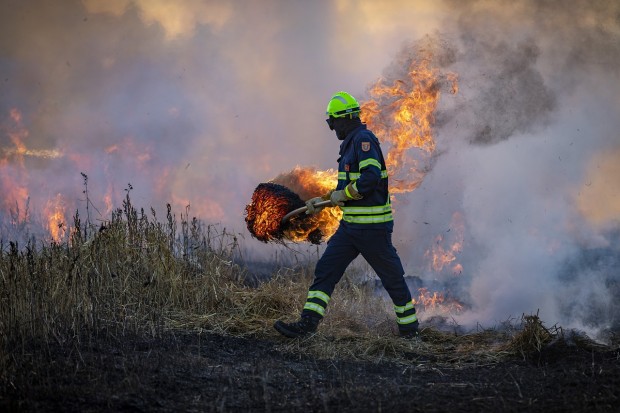There were typical instances of wildfires ravaging certain regions of the United States. Nevertheless, what actions might you take when this occurrence takes place? Explore these five clever approaches you should consider implementing to safeguard your home from wildfires.

(Photo : Pixabay/Matthias Fischer )
1. Remove everything that surrounds your home.
Professionals advise householders to construct a defensible space encompassing a 5-foot radius around their dwelling in fire-prone areas. An accumulation of wind-blown embers can inflict damage in this area.
According to Alister Watt, chief product officer for the Insurance Institute for Business & Home Safety, a research organization that assesses building structures against wind-driven rain, hail, and wildfire, if you want to create an area that is resistant to embers, the five-foot perimeter should not contain anything that could catch fire, such as plants used for landscaping, and this should be the case even under a deck. There are reportedly a lot of homeowners who fill the space with stones or gravel for decoration.
2. Get a fire-resistant roof.
Rooftops are frequently engulfed in flames that rapidly consume dwellings when embers from nearby wildfires fall there. Regardless of what other measures you take, according to fire expert Jack Cohen, having a flammable roof will determine whether or not your home is destroyed in the event of a fire.
Accordingly, you can use roofing material that does not catch fire, such as asphalt shingles, metal, slate, tile, or any combination of these materials. Although wood panels are the most frequently used type of combustible roof covering material, homeowners who wish to avoid re-roofing their homes can treat their wooden roofs with a fire retardant or install a rooftop sprinkler system.
On the other hand, specialists caution that such remedies might not be sufficient; therefore, you should consider switching materials entirely. Steinberg claims that it is simple to construct a roof that is not combustible. You won't have to worry about significant issues if you purchase a standard asphalt shingle roof and have it installed properly.
Also Read: 5 Eco-Friendly Building Equipment That You Should Know
3. Elevate your window safety.
Installation of dual-paned windows and screen replacement is an excellent method for protecting your windows from the threat of wildfires. When exposed to extreme temperatures, a window with two panes of glass is less likely to break. Replace any screens that have become damaged or ripped to improve your ability to withstand embers.
4. Cover Vents
A home or attic with open vents can be a potential entry point for embers flying through the air. Fire officials advise encasing vent apertures with a minimum of a half-inch of metal mesh to avert ember ignition within a dwelling. Moreover, a small wire mesh can reportedly be used to aid fireproof vents in the basement or attic, and locating these vents at your neighborhood hardware store is not difficult.
5. Plan for emergency responder access
You should make sure that the names and numbers of the streets are well-marked and legible so that firefighters can locate your house in the event of an emergency. Fire trucks and other first responder vehicles must be able to access your residence via driveways that are sufficiently wide and have adequate vertical clearance.
The ability of firefighters to protect your home from wildfires is improved when you create a secure area around your living space. Remember that their training restricts them to protecting structures only when doing so would be safe.
Related Article: World's First Ever 3D-Printed Hotel in Texas Built to Withstand Hurricanes and Wildfires







